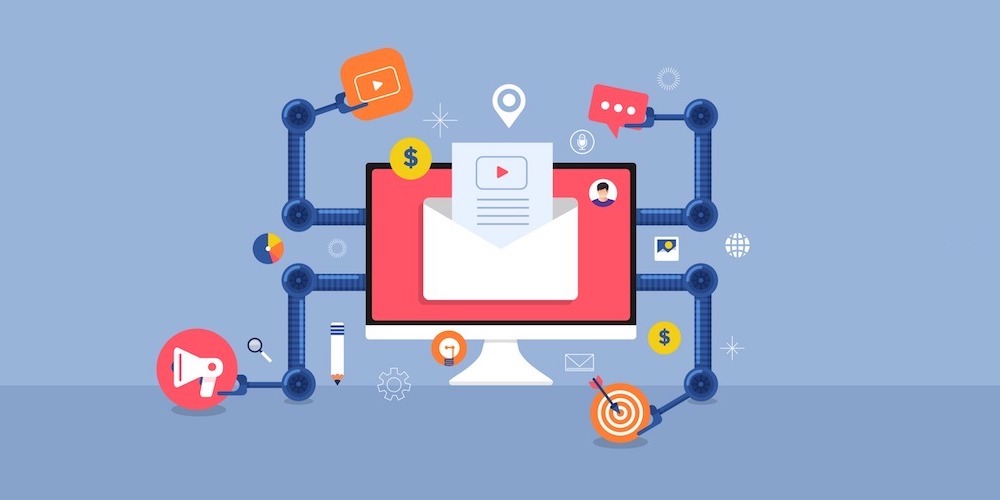10 Common Email Marketing Mistakes to Avoid At All Costs

I think you will agree when I say: email marketing is not for the faint of heart. But it’s only valid if you don’t know what you’re doing and end up making some or all of the common email marketing mistakes in this post.
You can take it from us; email marketing is still one of the best ways of driving traffic and boosting sales. And if you do your homework well, you can avoid these common pitfalls and turn email marketing into a gold mine.
Sounds like a great deal, right? I take it that you’re just starting out or thinking about email marketing. If you’re a pro, well and good, you’re welcome too.
Without further ado, let us get down to business and build you an email list that offers tangible results. Here are 10 very common email marketing mistakes you should certainly avoid.
1. Starting Email Marketing Late
Usually, most beginners don’t see the immense value in email marketing. So, instead of allocating email marketing the time and resources it deserves, you focus on creating content, social media and some SEO.
As such, you put email marketing on the back burner, and end up leaving a lot of money on the table. You forget a majority of people who come to your site from search engines and social media often don’t come back.
However, you can turn the tables by deploying email marketing as you launch your site. As a result, you improve the odds of capturing leads you’d otherwise miss from the word go. Using an exit intent optin plugin can help you capture new leads before they leave your site.
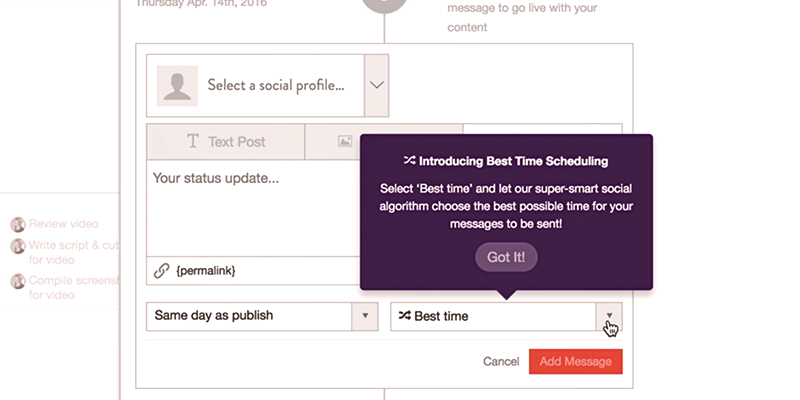
And since we are talking about timing, keep in mind that you can’t just send out email blasts whenever you desire. Studies show there are specific days and times when your emails have the most impact on your subscribers. Tools like CoSchedule even offer “intelligent scheduling” to help you know when it’s the best time to post on various platforms.
Therefore, don’t wait to start email marketing at a future date; start right away and keep improving, which leads us to point numero dos.
2. Failing To Test & Improve
Knowledge is power they say, meaning it’s essential to research and test different aspects of your email marketing strategy. In most cases, email marketing newbies slap together a sign up form, place it somewhere on their website and then leave it to be.
Then they wonder why their email list isn’t growing as fast as they desire. Are you in the same boat? Well, you need to run some A/B tests so you can focus on the areas with the most significant impact.
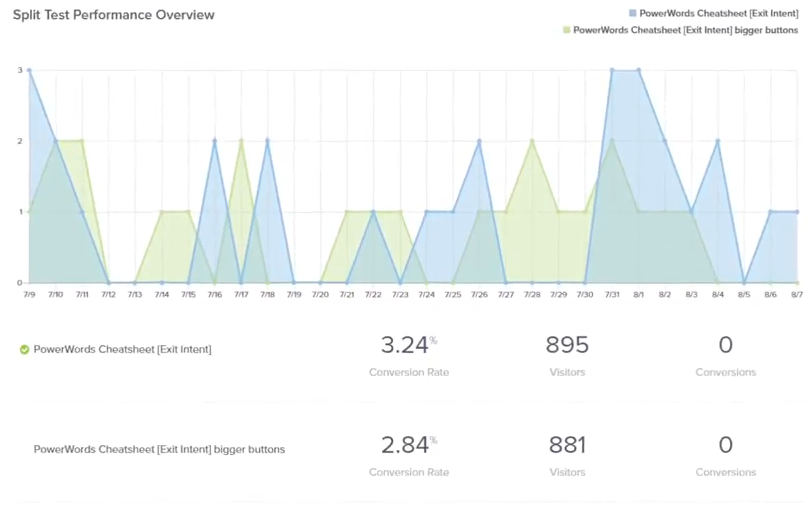
OptinMonster A/B Reports Example
Top marketing tools like Hello Bar and OptinMonster feature A/B spit testing built-in. This way you can build and test various sign up forms, wording and locations to see what works best for your site.
Similarly, you can learn from your email content using built-in reporting from your email provider. Open rates are important!
In simpler terms, live, learn and improve buddy. Additionally, remember to keep a keen eye on the latest email marketing trends so that you can capitalize on methods with the best results.
3. Buying Email Lists
I don’t know why you’d want to buy an email list unless, of course, you’re one of those Nigerian Yahoo boys or a low-life spammer. But seeing you’re neither, you’re better off building your email list from scratch.
Buying an email list is always a bad idea, no matter how much time you think you’re saving. You don’t need a Ph.D. in explosives engineering to know that buying an email list will blow up in your face big time.
For starters, nobody ever wants to receive emails from a list to which they didn’t subscribe. It gives off that spammer/scammer vibe you see with the “Video Reveals How to Make 10X Profits From Your Site” emails. I can bet all my money you don’t bother opening this kind of email, plus they usually end up in the junk folder.
Secondly, buying an email list is a surefire way of assassinating your brand. If you’re running a business (and would benefit from a strong brand), please steer clear of buying email lists. That, plus your email marketing provider will ban you and stop you from sending emails to the list you purchased.
Thirdly, you’re essentially flushing money down the drain buying a list of fake email addresses. Even if a couple of the contacts are real, they don’t give a hoot about your business, which, again, means wasted time and money.
But most importantly, it’s illegal to sell (and buy) email addresses. The CAN-SPAM act includes a number of email compliance rules (such as no misleading titles, easy opt-out options, etc) and strictly forbids the sale or transfer of email addresses. So just don’t do it.
4. Ignoring Lead Generation
To create an email list, you need people to sign up. Your fantastic content is one part of the equation. User experience is the second and a lead generation solution is the third. Put the three together, and your email list grows exponentially.
To clarify, you might offer the most intriguing content and user experience, but if you fail to make your sign up forms noticeable, all your efforts are for nothing as far as email marketing goes. People need to see your sign up forms!

Enter lead generation plugins such as WP Optin Wheel (checkout our in-depth review), Thrive Leads and Optin Monster, and you save the day. Of course, the above tools boost your opt-in rates significantly, so you never have to complain people aren’t subscribing to your email list.
5. Do You Check Your Stats?
Tracking your open rates is incredible and all, but do you know whether the reader makes it to your website, where they can make a purchase? Well, if you had no idea, you can track email subscribers using Google Analytics.
For instance, you can see the subscribers that came to your site from each email campaign. You can also look at the emails with the most significant impact, purchases on your site, and so much more. Big data.
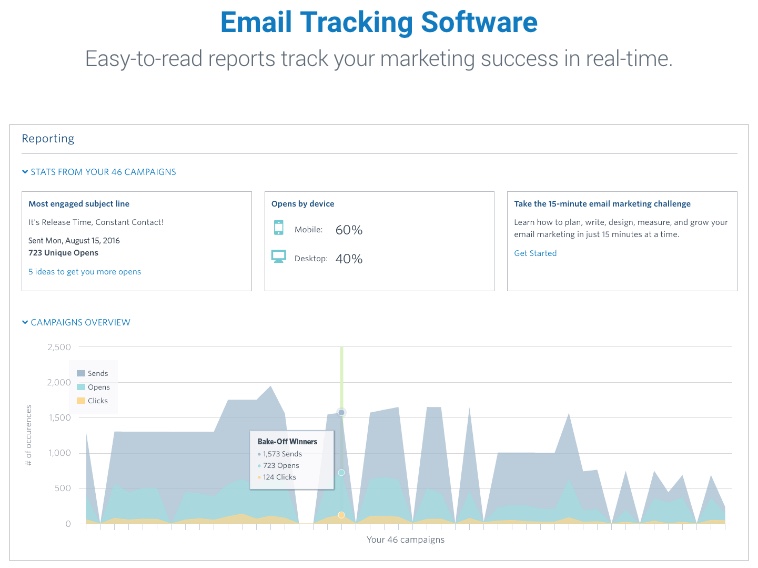
Constant Contact Real Time Reporting
The best part is most email marketing providers such as MailChimp and MailPoet offer their own built-in reporting as well as Google Analytics integration on the fly. Constant Contact is another great example, with on the fly reporting and even campaign comparison options. So you can see at any point in time how your marketing efforts are going.
At the end of the day, tracking is all about confirming your email campaign is successful.
6. Segmenting, Or Lack Thereof
Nope, don’t do it. Don’t make the email marketing mistake of sending mass emails, unless of course, it’s just a routine update suitable for all users. Having a huge list is not enough, you want to segment your list on parameters such as geographic location, income, gender, past purchases and so on.
Obviously, you can’t ask for all this data upfront lest you scare away subscribers thanks to your not-so-short form. After all, you need only the email address to sign up a reader to your list. You can collect data later with surveys, on-site forms, and such creative methods.
The point is, the more data you have about your reader, the better you can segment your list. After that, send laser targeted messages to different segments. By any means, you don’t want to send customers and non-customer the same emails, for example.
The sooner you segment your list, the better.
7. Using Non-Responsive Email
In a world chockful of devices of varying sizes and options, you cannot afford to miss the mark with responsive design. Which means, on top of a responsive WordPress website, you need to send out responsive and mobile-friendly emails.
Without a doubt, some of your recipients read your email on their mobile devices, so don’t alienate any given group depending on the device/client they use. In other words, use a mobile-first approach when creating your email campaigns.
Moreover, invest time in testing how the email looks in as many devices as you can. Only send out the campaign when you are sure your email looks great on multiple devices. As a beginner, I once used large images in the header section, and to cut a long story short, let’s say the readers couldn’t read the emails on smartphones.
In line with that, you can use a tool such as Litmus to test your email before sending a full email campaign. The service allows you to check how your email looks on more than 90 email clients, such as Gmail, Google Android, iPhone and Outlook among others.
8. Spamming
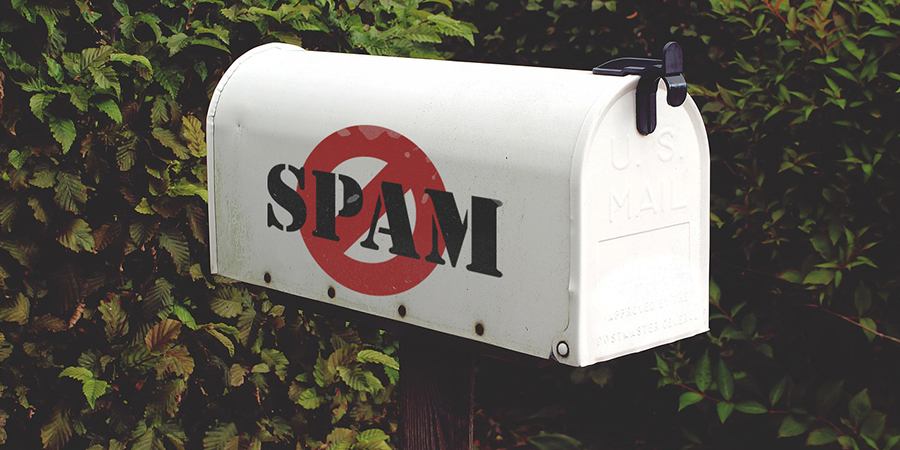
Bombarding your subscribers with emails won’t move your agenda forward faster. On the contrary, sending many emails too frequently is one of the major email marketing mistakes that turns off your readers and could increase unsubscribe rates. If that isn’t enough, sending emails too often might trigger spam blockers, ruining your chances of connecting with the reader.
A weekly, monthly or bi-monthly schedule works amazingly well provided you send valuable content and offers. Your campaign bounce, open and click rates should be evidence that you’ve got a good schedule worked out.
9. Inconsistency
On the other hand, we have the other group of email marketers who send out emails sporadically such that your readers don’t know when to expect content from you. You can avoid inconsistency by setting and following a strict schedule, or create email drip campaigns to make sure you stay in touch for a set period of time.
Otherwise, you end up frustrating recipients since your emails are predictable, which also means your business is easily forgettable. After all, the goal here is to keep your brand relevant by emailing your readers regularly, but without spamming them.

Take a bit of time to plan isn’t just a part of good content marketing strategy, it’s also key to making sure your email campaigns stay on track as well. A free plugin such as Editorial Calendar is a great tool to help.
If you send out emails inconsistently, it is only a matter of time before subscribers lose interest and unsubscribe. Worse still, they might mark your emails spam even if they were genuinely interested in your business from the beginning.
10. Sending “Filler” Emails
You’ve probably fallen victim to this mistake a million and one times before; I know I have. Here is how the typical scenario plays out: You hear about email marketing, and you go to work. A few days later, you have a couple of subscribers, and it feels fantastic.
Some internet marketing guru said you should send a welcome message first, but never told you what to do after that. So, you send out two emails, and you have nothing more to say for the third week. Still, you want to remain consistent, so you put together a pointless email, or what I like to call “filler email,” and hit send.
Obviously, your readers see through the facade and start leaving. I bet you have seen this happen even with blog posts. Have you ever been on a blog with seemingly good content and then found one post that didn’t seem to serve any purpose other than filling the schedule?
Well, don’t email your subscribers without a specific goal in mind. Be professional; plan your schedule, so you can deliver a valuable email each time.
After all, your subscribers are your customers, and you wouldn’t want to kill them with useless junk, now would you?
Final Words on Common Email Marketing Mistakes
Our list is merely a tiny sample of all common email mistakes you can make. Our hope, however, is to help you to avoid these ten pitfalls that are detrimental to the success of your email marketing campaign. If you’re privy to other common email marketing mistakes, we welcome you to share in the comment section below.
Cheers to happy email list building!

